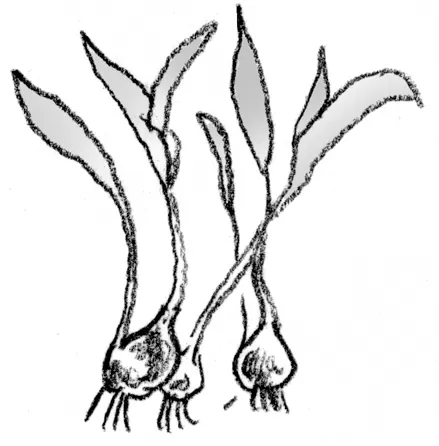- Key takeaways:
- Plant Propagation encompasses sexual (seed) and asexual (vegetative) methods.
- Successful propagation relies on understanding plant needs and employing appropriate techniques.
- This guide provides detailed instructions for various propagation methods.
- Mastering propagation empowers you to expand your garden and share the joy of growing.
Plant propagation, the art and science of creating new plants, opens a world of possibilities for gardeners. Whether you dream of expanding your flowerbeds, sharing beloved plant varieties with friends, or simply delving deeper into the magic of plant life, understanding propagation is key. This guide explores the fascinating world of plant propagation, offering practical tips and techniques to cultivate your green thumb.
Contents
- Sexual Propagation: The Seed of New Life
- Understanding Seeds
- Germination Essentials
- Breaking Dormancy
- Asexual Propagation: Cloning for Consistency
- Cuttings: Snip, Dip, and Root
- Layering: Encouraging Roots While Attached
- Division and Separation: Multiplying from Existing Structures
- Grafting and Budding: Combining for Unique Results
- Conclusion: Your Propagation Journey Begins
Sexual Propagation: The Seed of New Life
Sexual propagation, involving the union of pollen and egg, produces seeds that carry the genetic blueprint of two parent plants. This method introduces genetic diversity, leading to potentially unique characteristics in the offspring. It also provides a cost-effective way to grow a large number of plants.
Understanding Seeds
A seed contains everything needed for a new plant to emerge: a protective seed coat, an endosperm providing nourishment, and the embryo itself. Successful germination relies on several environmental factors: water, oxygen, light, and heat.
 alt text describing seed structure
alt text describing seed structure
Germination Essentials
- Water: Consistent moisture is crucial for imbibition, the initial water absorption that kickstarts germination.
- Light: Some seeds require light to germinate (e.g., lettuce, petunia), while others prefer darkness (e.g., peas, beans). Research your specific plant’s light needs.
- Oxygen: A well-aerated growing medium allows for proper respiration, vital for the growing embryo.
- Temperature: Each species has an optimal temperature range for germination. Consistent warmth within this range promotes successful sprouting.
Breaking Dormancy
Some seeds possess dormancy mechanisms that prevent premature germination. Techniques to break dormancy include:
- Scarification: Scratching or weakening the seed coat to allow water penetration (e.g., using sandpaper, acid treatment).
- Stratification: Exposing seeds to a period of cold, mimicking natural winter conditions (e.g., refrigerating seeds in moist medium).
Asexual Propagation: Cloning for Consistency
Asexual propagation, also known as vegetative propagation, creates new plants from parts of a single parent plant. This results in genetically identical offspring, or clones, preserving desirable traits.
Cuttings: Snip, Dip, and Root
Cuttings involve rooting a severed piece of the parent plant. Types of cuttings include:
- Stem Cuttings: Sections of stem containing nodes are used. Different methods include tip cuttings, medial cuttings, cane cuttings, heel cuttings, single-eye and double-eye cuttings.
 alt text showing different types of stem cuttings
alt text showing different types of stem cuttings
- Leaf Cuttings: Whole leaves or leaf sections can be used to propagate certain plants, with new plants developing from veins or petioles. Techniques include whole leaf with or without petiole, split vein, and leaf sections.
 alt text depicting leaf cutting techniques
alt text depicting leaf cutting techniques
- Root Cuttings: Sections of root, typically taken during dormancy, can produce new shoots and roots.
 alt text showing how to take root cuttings
alt text showing how to take root cuttings
Layering: Encouraging Roots While Attached
Layering involves rooting a portion of the parent plant before detaching it. Different methods include:
- Simple Layering: Bending a stem to the ground and covering a portion with soil.
 alt text illustrating simple layering
alt text illustrating simple layering
- Tip Layering: Burying the tip of a stem to encourage rooting.
- Compound Layering: Burying multiple sections of a flexible stem.
 alt text showing compound layering technique
alt text showing compound layering technique
- Mound (Stool) Layering: Mounding soil around the base of a plant to encourage rooting of emerging shoots.
- Air Layering: Encouraging root formation on a stem by wrapping a wounded section with moist sphagnum moss.
 alt text explaining air layering method
alt text explaining air layering method
Division and Separation: Multiplying from Existing Structures
- Division: Separating plants with multiple rooted crowns (e.g., dahlias, iris).
 alt text showing division of iris
alt text showing division of iris
- Separation: Propagating plants that produce bulbs or corms by separating the new growths from the parent structure (e.g., tulips, gladiolus).
Grafting and Budding: Combining for Unique Results
Grafting and budding involve joining a scion (desired cultivar) with a rootstock (providing root system). Different methods include cleft grafting, bark grafting, whip grafting, patch budding, chip budding and T-budding. These methods require careful technique and attention to compatibility between scion and rootstock.
Conclusion: Your Propagation Journey Begins
Plant propagation is a rewarding endeavor that connects you with the life cycle of plants. By understanding the various techniques and practicing with patience, you can expand your garden, preserve cherished varieties, and experience the profound satisfaction of creating new life from existing plants. Share your propagation successes and questions in the comments below, and explore more gardening tips on Thelittle.garden!
